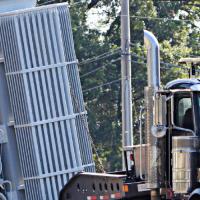Looking for research and development projects made possible through DEED grants and scholarships? Check out the DEED Project Database.
Trying to find information about specific public power utilities? If you are member, check out the Public Power Directory.
The San Diego City Council on October 3 approved a contract for a consulting firm to examine the feasibility of the California city transitioning to a public power utility.
SPONSORED ADVERTISING FEATURE Faced with growing concerns about power supply options, some public power communities in the Western U.S. are embracing a new, innovative nuclear technology option by signing on to a small modular reactor (SMR) project in Idaho. So far, over two dozen members of Utah
An American Public Power Association (APPA) survey of its members shows that production of distribution transformers is not meeting current demand, “as evident in the significantly growing lead times, lack of stock in yards and the high number of project deferrals,” APPA said.
The Rate Design Interest Group is where public power professionals can connect to learn about various trends and topics in utility rate design. APPA hosts quarterly webinars for members featuring a range of expert guest speakers. Past webinar topics include transactive energy rates, communicating
As you encourage your customers to stay cyber safe during Cybersecurity Awareness Month, it is a good time to also assess your utility’s cybersecurity posture and capabilities. As part of...
As we approach the November midterm elections, we’re bombarded in the news and on social media by pundits and politicians from across the political spectrum telling Americans about the various...
A recent fire at a battery storage facility in California is bringing fresh attention to safety issues tied to energy storage as the technology grows in deployment across the U.S.
This report summarizes a six-month effort to better understand the role that energy storage technologies can play in enabling public power utilities to lower barriers to energy storage integration with...
The costs to interconnect wind, solar and storage projects in the Midcontinent Independent System Operator (MISO) region have nearly doubled and, in some cases, nearly tripled over the last 18 years, according to a study by the Lawrence Berkeley National Laboratory.
Citing the uncapped nature of tax credits and attractiveness of economics, investment firm Credit Suisse is estimating that the ultimate public climate spending enabled by the Inflation Reduction Act (IRA) could be over $800 billion.




